Jenn + Rick Suhr Give Back
April 2023, Issue 12
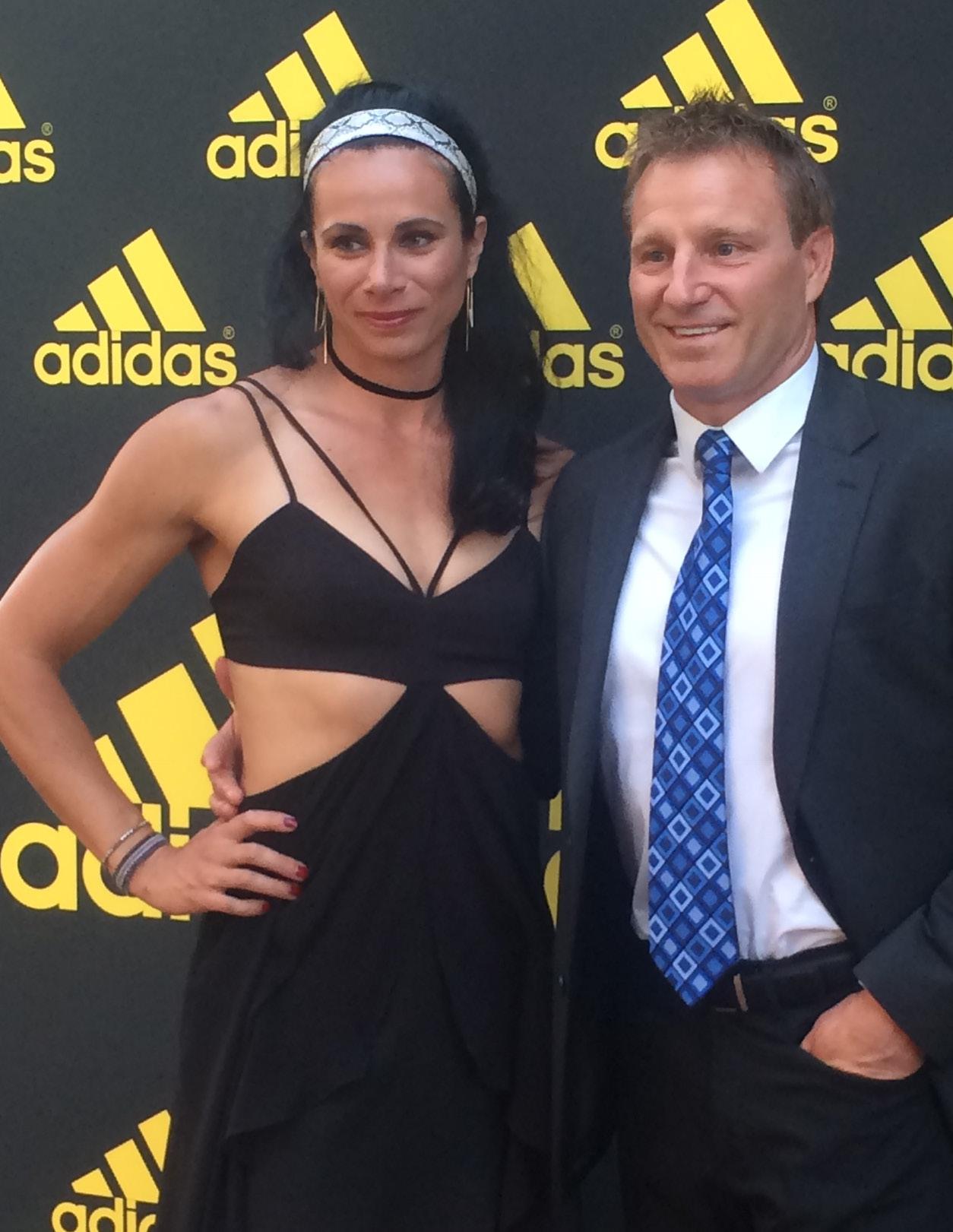
TAKEOFFTAKEOFF
The mission of TAKEOFF Magazine is to inspire amateur athletes to personal greatness.
My name is Adele San Miguel, and I am the co-founder of Pole Vault Carolina, a training facility based in Durham, North Carolina.
TAKEOFF is the next iteration of our club’s mission: to coach the athlete to their highest self. I’m thrilled to have you on our runway.
ADELE SAN MIGUEL, PUBLISHER + EDITOR
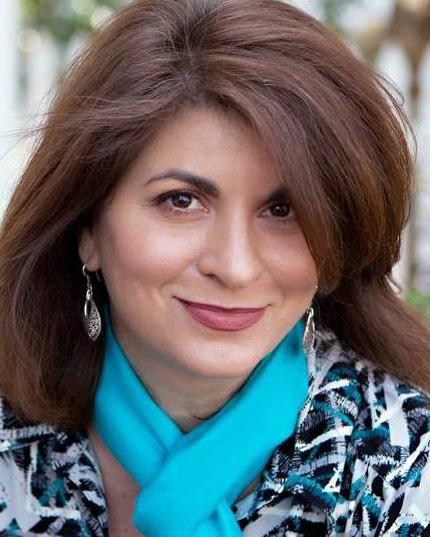
TAKEOFF MAGAZINE
Cover photo provided by Jordan Gray
H HELLO THERE!
April 2023
When you hear the word ‘combine’ here in the U.S., one thinks of the oppportunity for National Football League hopefuls to be measured on various standards to see if they have what it takes to succeed as professional football players.
The Combine at Suhr Sports outside Rochester, New York focuses on pole vault. It is a combine-ation of Jenn and Rick Suhr’s talents as a professional vaulter and elite coach who, now retired, wish to pay it forward. The combine teaches next level technical aspects of the vault, and how to manage life on the pro circuit. The interview begins on page 16.
In ClubHub you will meet four outstanding athletes: Havana Layton and Luther Mogelvang of Southwest Florida Vaulters and Abigail Cornell and Colin Johnson of Pole Vault Carolina. Do not miss the chance to be inspired by them!
As alumni of the Universtiy of Tennessee, we could not resist the story of Caroline Weems from Memphis Vault Club and her recruitment to UT. Caroline is a 3-time state champion who holds the indoor state record. Ralph Hardy brings us Caroline’s story on page 12.
EJ Obiena knows what it means to persevere. The Filipino vaulter ended his 2022 season ranked 3rd in the world after years of sacrifice and injury. The full story by Ralph Hardy is on page 28.
Future med student and collegiate pole vaulter, Leah Granger, wrote Pressure to Look the Part, which focuses on the sensitive issue of body positivity in pole vault
We hope you enjoy issue #12!
All the Very Best, Adele
A
LETTER FROM THE EDITOR
TAKEOFF MAGAZINE 3
12 ON DECK Letter from The Editor 3 Makes and Misses 6 ClubHub: Southwest Florida Vaulters 8 Pole Vault Carolina 10 RECRUITED: Caroline Weems 12 MENTAL HEALTH: Pressure to Look the Part 14 Jenn and Rick Suhr Give Back 16 Coach’s Critique with Jim Bemiller 24 EJ Obiena Perseveres 28
Issue Number
4 TAKEOFF MAGAZINE
Cover photo provided by Rick Suhr.
Coach’s Critique


CONTRIBUTORS
Pressure to Look the Part
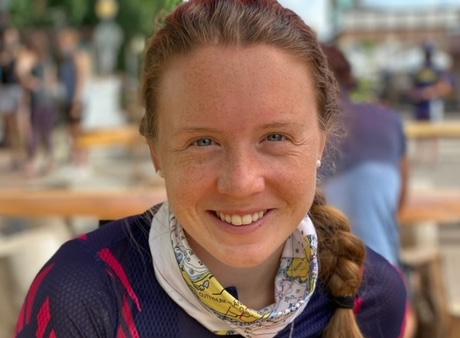 Ralph Hardy
Jim Bemiller
Olympic Pole Vault Coach Gold Medal 2004 Silver Medal 2000
Neuroscience student Pole Vaulter, Middlebury College
Leah Granger
Playright Novelist, Argos Masters Pole Vaulter
Ralph Hardy
Jim Bemiller
Olympic Pole Vault Coach Gold Medal 2004 Silver Medal 2000
Neuroscience student Pole Vaulter, Middlebury College
Leah Granger
Playright Novelist, Argos Masters Pole Vaulter
5
Recruited, EJ Obiena Perseveres
MAKES & MISSES
By Adele San Miguel
We strap the pole bag to the top of the truck with bungees, double check the tape, sticky spray, spikes, jersey, water, snacks, gas money, ear phones and protein bars. Poles for long approach, short approach, and the pole our athletes dream of grabbing after they have surmounted their personal record.
It’s go time.
Time for the long rides and the opportunity to witness our athletes try once again to push themselves against a higher bar. It’s time to show them they matter by strapping on a seat belt and slipping the car into gear.
We drive to support our children’s drive to beat last week’s height. We review video, ring the cow bell, and start the clap on the third attempt. We stand up and yell because we know the voice of our support is the thing they need most in the moment before takeoff. We hold them through the disappointments.
We drive for the medals and we drive for the no heights. We watch the speedometer click higher and higher. We buy AAA.

It’s time to go.
It is time for this sweet era of traveling alongside our children and helping them become more
through sport. We crisscross our home state and the one next to it, learning the landmarks and each other. We wake up in the dark, return in the dark, handle our work from the car, and negotiate business from the stands.
Weekly, our kids try to improve. Do we?
Do we launch ourselves with a new determination to move beyond limits in our work?
Do we push ourselves with the same courage and consistency?
Do we grab a larger pole and go for it?
This is what they do for us. Comfort zones are comfortable, but there is no growth there. Our vaulters stretch their abilities and remind us to do the same.
What is your personal record, moms, dads, and coaches?
Your athlete is inspiring you to surpass it.
It is time.
6
ADVERTISE HERE
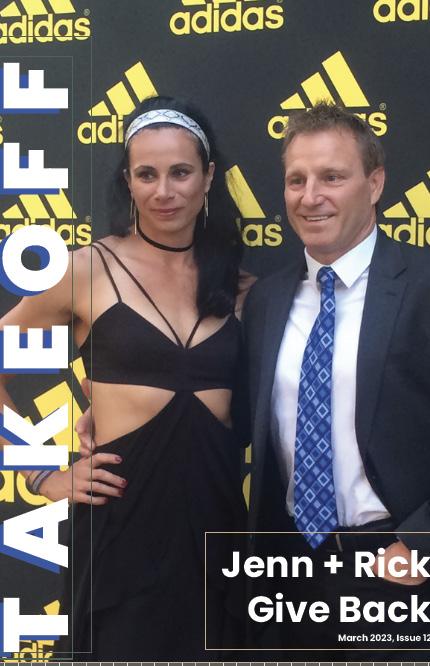
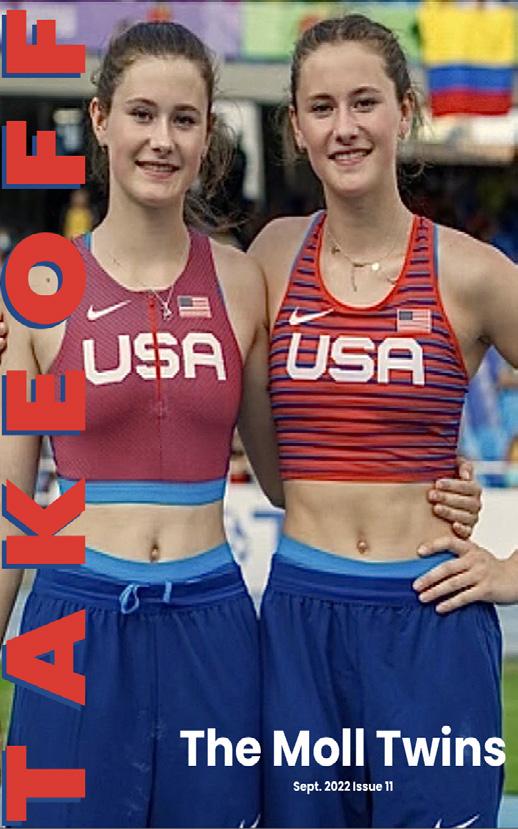
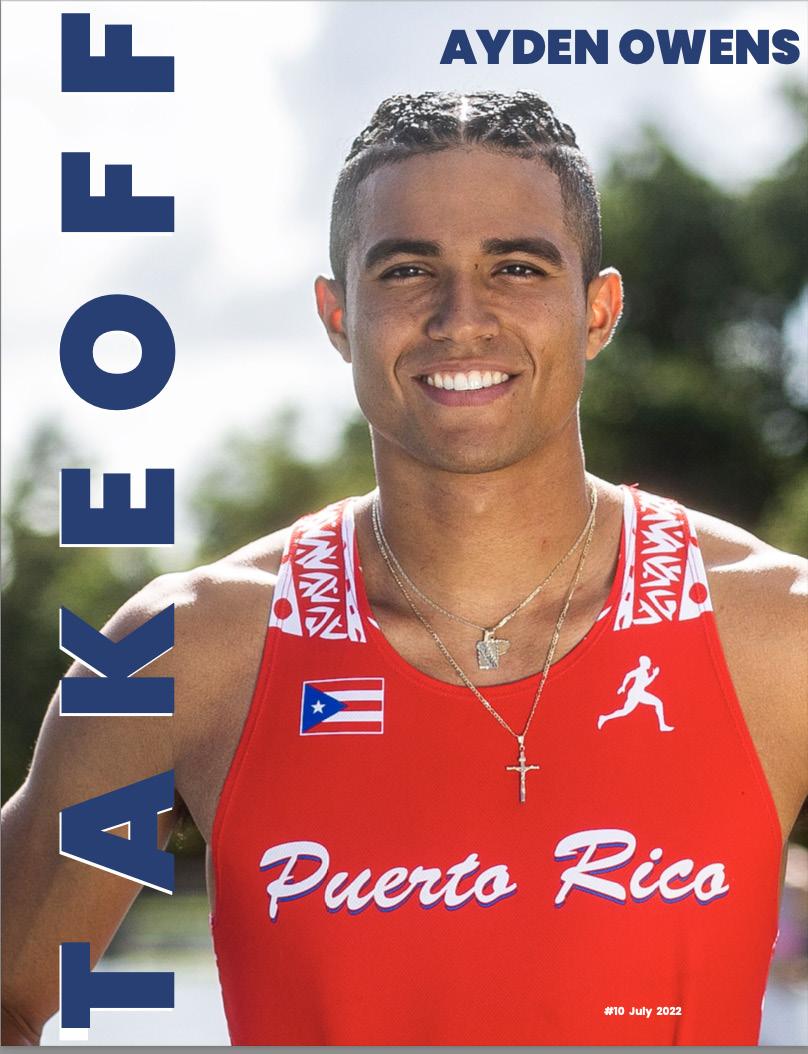
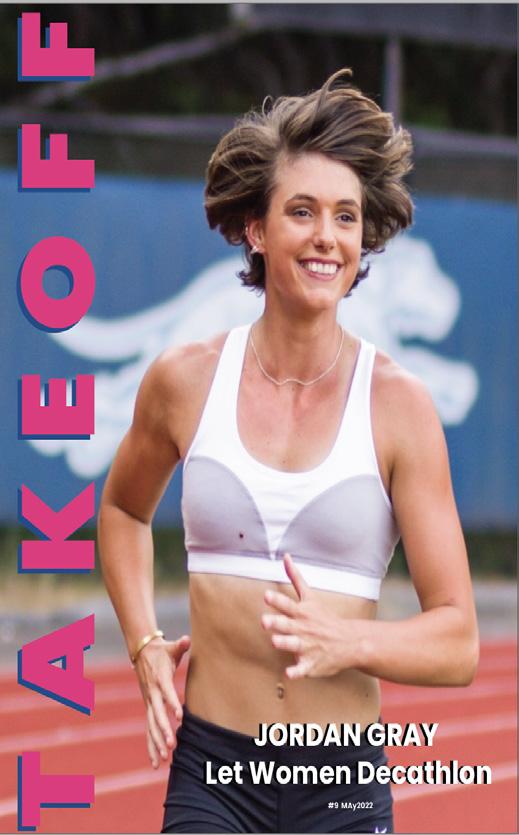
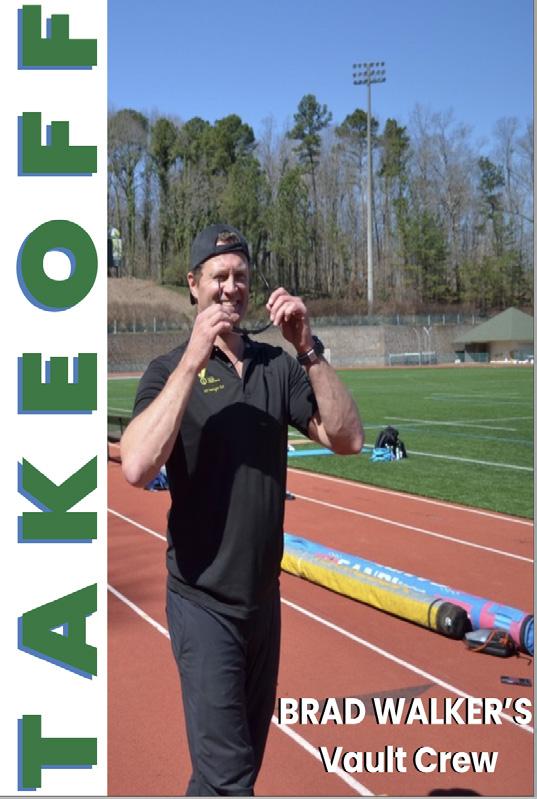


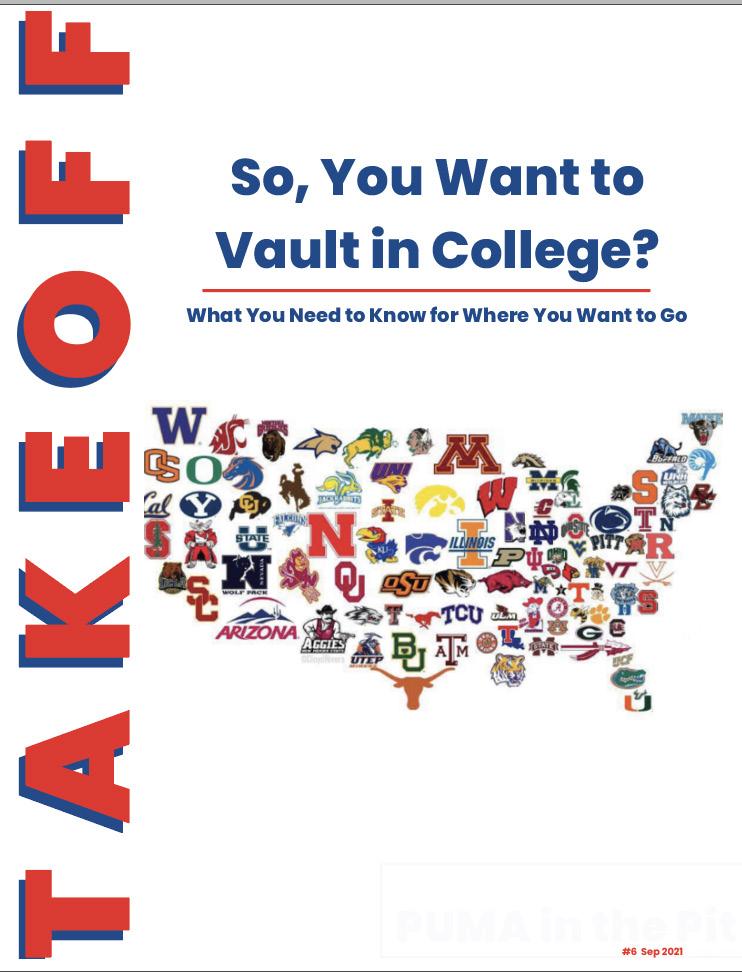


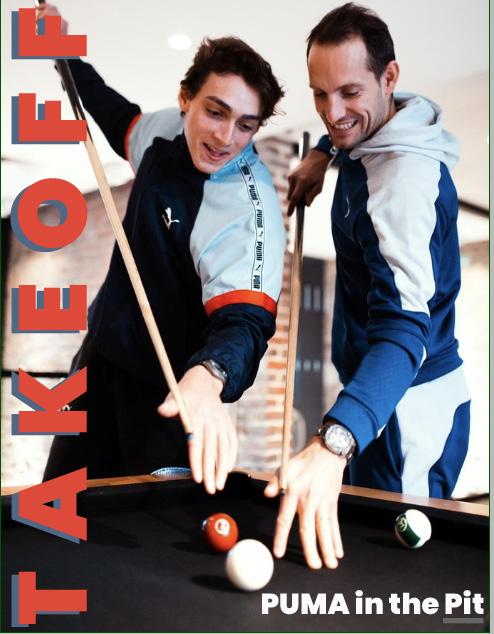

Southwest Florida Vaulters
Naples, FL
Head Coach: Kayden Cecil
CLUB HUB Havana Layton
Havana Layton gives new meaning to the term, raising the bar.
Equally passionate about swimming and pole vaulting, Havana embraced both sports. In the fall, the Naples High School senior will trade Florida’s sunshine for the University of Vermont’s winter clime, where she has committed to compete in the two disciplines.

Havana is a two-time Florida State Runner-Up in the 100m freestyle who made it to states in the pole vault after her first year in the event. With a PR of 9’4.25”, Havana’s biggest struggle has been injury; she missed her junior season due to stress fractures in her fibula and tibia. Still, Havana leans toward optimism and took up the role of team photographer while recovering.
“Havana’s work ethic and persistence is what separates her from her competition. She would come to practice in her walking boot and do drills such as the Swing-Up Rack, pole drops, walking pole drops, high bar drills and a lot of core work. Havana brings a positive attitude and mindset to practice every day and will make sure she out works every other athlete out there!” says coach Cecil.
Havana is working on a consistent plant and runup. She is focused on ground work and box drills and trusting her coaches that her step is correct.
Life lessons abound in pole vault and Havana has learned that even when you do not succeed, you should not give up. Failing is an opportunity to reevaluate how to improve upon oneself so the same mistake is not made again.
Outside of pole vault, Havana is the Senior Class President and a member of Fellowship of Christian Athletes. She loves to hang out with friends, go to the beach, and is currently learning how to play the guitar!
Photo provided by Kayden Cecil
8 TAKEOFF MAGAZINE
Vaulters
Luther Mogelvang
Being a 6’5” pole vaulter has its benefits and its challenges. It takes more energy for a long body to invert, but that is not holding Luther Mogelvang back. The junior from Naples. Florida is fearless and unafraid to bring it on the runway.

His coach Kayden Cecil has this to say:
“Luther has a great attitude about training and pole vaulting. He has been working hard on his pole drop and getting inverted which is not any easier with his height.
Luther’s biggest advantage is that he is extremely coachable. He works his tail off on the track, at the pole vault pit, and most importantly in the classroom. His work ethic to maintain a 4.0 GPA and dedication in the vault is what SWFL Vaulters is all about!”
Luther was an academic scholar his freshman and sophomore years, and took first place at districts and second place at regionals to compete in the state meet where he came in 13th overall. Luther’s favorite pole vault memory is clearing the bar on the third attempt at regionals to earn one of only 2 qualifying spots for states.
The youngest of four siblings who all competed in the high jump, Luther’s true love is pole vault and he enjoys traveling to train and compete. Luther is also a cross country runner, sprinter, and basket-
ball player. Outside of athletics, Luther is a tenor saxophonist, and plays in a symphonic and jazz band.
Luther has been most influenced by his coaches John Walsh, Kayden Cecil. Bobby Haeck, and Sean Young. The junior from Naples High School has a personal record of 14’9”.
Luther has already improved his PR by two feet this outdoor season!
TAKEOFF MAGAZINE
Photo provided by Kayden Cecil
9
Pole Vault Carolina CLUB HUB
Durham, North Carolina
Head Coach: Jose R. San Miguel
Abigail Cornell
Abigail Rose Cornell is the sort of person who inspires you to up your own game.
Abbey is a pole vaulter, a pilot, a working actor, a cadet in the Civil Air Patrol, a competing equestrian, president of the National Honor Society, a minister of hospitality at her church, and a star senior at Wake Young Women’s Leadership Academy.
There’s more.
She is a 3rd-degree black belt in Tae Kwan Do, level three in Krav Maga, and an orange belt in Jiu Jitsu. Abbey admits to losing many fights. Through this, she learned perseverance.
As a pole vaulter, Abbey has dealt with serious injury twice and still found her way back to the top of her vault. With a personal best of 11’6, Abbey plans to vault in college while studying aeronautics. She holds her high school’s record.
Abbey knows she tends to overthink things, but the discipline she learned in martial arts reminds her to not think, just do.
Her favorite pole vault memory is from her sophomore year when she made it to states and placed 4th! Unbeknownst to her, her grandmother had flown into town to share the accomplishment.

“Abbey trains hard and consistently. With her
many endeavors, she found a way to prioritize pole vault practice. Her true personal best is much higher than her PR of record,” says Coach Jose.
Abbey has appeared in film and television. For fans of Twilight’s Breaking Dawn, Abbey played Renesmee. More recently, Abbey took on the role of Bonnie (Mamaw) at age 13 in Hillbilly Elegy. You can view her IMDb page here! (Active link) https:// www.imdb.com/name/nm5185020/?ref_=vp_ close
Photo provided by Abigail Cornell
10 TAKEOFF MAGAZINE
Colin Johnson
Colin Johnson has a big why.
Colin was a busy swimmer throughout high school who did track and field for fun. Until February of his senior year, Colin showed up to practice sporadically.
At the 2022 NCHSAA Indoor State Championships, 2 A division, Colin improved to 11’6”. He then hightailed it from Winston- Salem to Cary, North Carolina, a 2-hour drive, to compete in the state meet for swimming the next morning.
Bouyed by his improvement, Colin realized his potential in the pole vault. He started attending practice regularly. Then this happened:

Colin’s personal best improved from 11’6 to 15’ in the next 3 months. He qualified for the Championship section of Adidas Outdoor Nationals!
Colin was not done. Though he hoped to synergize with a college to continue his vault career, time was short and he did not find the best match. He graduated from Nash Central High School, registered for community college, and continued training at the club.
“At Pole Vault Carolina, we look for heart, character, and leadership on and off the runway and Colin exemplifies this. He is the first athlete at a meet and the last to leave. He cheers for everyone
who goes before him, and is still energized to perform his best late in the evening when the crowd has dwindled.” says Coach San Miguel.
Colin is not interested in wasting time or money. Colin works 30 hours a week to pay for his practice sessions. In March of 2023, on some new longer, heavier ESSX poles, Colin jumped 15’8”, 16’, and 16’2” in the same meet.
Colin is the kind of athlete we love to root for!
TAKEOFF MAGAZINE
Photo credit: Meryn Johnson Photography
11
RECRUITED
Caroline Weems University of Tennessee
By Ralph Hardy
In Memphis, Tennessee, home of Elvis and Graceland, there’s a Whole Lotta of Shakin’ Goin’ On: three-time state champion pole vaulter Caroline Weems has committed to the University of Tennessee!
Like many female vaulters, Caroline started as a gymnast. After five years of competitive gymnastics, the reflective middle-schooler realized she might not be able to compete at the D1 level, but she wanted to be a collegiate athlete. A friend had made a successful transition to pole vaulting, and her father knew Jason Vogt, the coach of Memphis Vault Club, so she tried

it. She was 13 years old and at the end of her eighth grade academic year. She cleared 6’6’’ her first day and was hooked. An all-around athlete, Caroline also played soccer and danced ballet, but she ultimately traded her gymnastics grips for a pair of spikes and committed to the rigorous training that leads to becoming a highly sought-after D1 recruit.
Caroline attends St. Agnes, an all-girls private Catholic school. She’s one of 25 girls on the track team out of a class of 350, in the DII-AA division. Caroline holds the Tennessee indoor state record 3.98m (13’3/4”)
RECRUITEDRECRUITED
12
and is the highest vaulting girl ever at Memphis Vault Club. There she lifts weights or vaults several times a week, practicing and competing alongside vaulters from the Memphis metro area.
Caroline has a 4.9 GPA and is the president of her class for the second year. Although Caroline has pursued pole vaulting with her trademark intensity, she’s a well-rounded teenager. She enjoys art, movies, and music, and has lately taken up climbing. She considers herself a goal-oriented person and has found that the times in her life she’s been most successful are when she has a clear goal and reminds herself of it daily. But coping with the (literal and figurative) ups and down of pole vaulting can be a challenge, she says.
“I have struggled with maintaining motivation in pole vault. I have emotional peaks of intensity, and it is hard to avoid coasting after accomplishing a goal. To help with this, I write my goals down and put them in a place where I see them every day. This keeps me hungry and helps me push every practice. To maintain belief in myself, I act like I am the best. I struggle with confidence, so the best thing for me is to fake it. At a big meet like New Balance Nationals, where there are many people better than me, I remind myself that I belong and I am meant to be there; it’s not an accident.”
At the 2023 New Balance Indoor Nationals, Caroline didn’t have to fake it to make it. Competing alongside 40 of the best female pole vaulters in the country, Caroline grabbed her go-to 13’160 pole and vaulted 3.80m (12’51/2”), finishing 8th, with the fourth highest clearance for the day.
As pole vaulters know, the sport is addictive. Caroline will attest to that. “I like how it motivates me to always be wanting more. After you do the best you’ve ever done, the bar still raises and you have to try even harder. The sport is so challenging and rewarding, and it is amazing how supportive everyone is, even the people I compete against.”
Like most successful high school vaulters, Caroline finds inspiration and motivation from the elite vaulters competing on the national circuit. For Caroline, it’s Alina McDonald, a 4.65m vaulter. According to Caroline, Alina has “one of the best inversions and I watch her jump almost every day and try to emulate that.”
Having established herself as one of the best vaulters in the state, Caroline soon found herself on the radar of college track and field coaches from around the country. She made official visits to University of Min-
nesota, Penn State University, University of North Carolina at Chapel Hill, and University of Tennessee, but one school checked all of her boxes.
“UT has everything I am looking for in a college,” she says. “It’s a big school with a lot of pride, and there is a strong athlete community. They have great resources and amazing facilities. The new coaching staff under the direction of Duane Ross is dedicated to improving the program. I look forward to training under Mark Hollis alongside elite pole vaulters. I also love how Tennessee values women’s sports. The track and field program is on the rise, and I look forward to being a part of it. I will study Architecture, and UT has a very good program with many opportunities for jobs and internships. I knew UT would be the place where I can improve athletically and achieve my academic goals.”
We asked Jason Vogt to reflect on Caroline.
“I knew that first year she was going to be special. Covid robbed her of her freshman season and half of her sophomore year so she never got to see how good she was early on. Covid hurt everyone obviously, but Caroline jumped high enough freshman year for New Balance Nationals Freshman division, but the meet was cancelled. I still believe that halted her development because she had to wait another year and a half for her first national meet. She needed a national stage to really see her potential. Once she experienced it, there was a dramatic change in her drive and hunger. I always knew it was there but I knew she needed to be in the moment to understand.
I’m most proud of her mental transformation. She’s always been a great kid and most things came naturally to her. Pole vault is a constant challenge because she has to work really hard to raise her mental game. She slowly learned how to raise expectations and mitigate meet stress. She learned how to gain instant access to her “alpha” without ever losing herself in success. She has zero ego. Actually, the opposite. I had to help her acquire some ego so she could buy into her potential. Club records immediately started to fall.
Fast forward to indoor states her senior year. We set the goal: break the state record in the state meet where the previous record was set. There was never a doubt in my mind that day. The theme of the last few weeks going into that meet was “All gas, no brakes”.
I couldn’t be prouder because Caroline finally got her moment: 6 days a week for 4 years and 1 jump. Ask her if it was worth it. I know the answer.”
13 TAKEOFF MAGAZINE
Photo provided by Tim Reilly
Pressure to Look the Part
By Leah Deforest Granger
Pole vault is the relationship between your body, your pole, and the runway in front of you. One jump takes less than ten seconds. In that time, you have to get down the runway, bend the pole, and clear the bar. If asked what goes into my vault, I would say speed, strength, and technique. There is a focus on control in each aspect of the vault to optimize your jump. As a woman in pole vault, I feel pressured by the weight number on my pole, the strength of my body, and the perception of my audience.
On each pole there is a weight number. This number represents the weight that pole was manufactured to support. The number is there to show each vaulter what poles are built to support their weight. While the weighting of poles is clearly done to prevent injury, it can put pressure on vaulters to be a certain weight.
As for the performance of a pole vaulter, we work hard to be fast and strong. The quicker you are at takeoff the less work you have to do in the air to clear the same bar. The stronger you are, the bigger the pole you can bend to propel you in the air.
Luckily, the strength needed to pole vault keeps away some of the desire for athletes to be thin that exists in distance running. That being said, the individual, spotlight nature of the sport can instill fear of the critical eye from the self and others. While the ideal body type may not be thin, there is a perception that the best performers do not have much more than muscle.
The sheer difficulty of vaulting physically prevents many body types from approaching the sport. Since pole vault is not well-known, we look to the professionals to get a sense of what high level vaulting looks like. When we look at the top women pole vaulters, they have a sinewy body type. As professionals balance the strength to weight ratio, they carry the heavy burden of the eye of media.
Unlike the tank tops and long shorts that men wear, the women’s uniforms are bikini bottoms and bras. British Olympic bronze medalist Holly Bradshaw caught the attention of media when she refused to wear the distributed uniform and had a less revealing outfit custom made. Holly claimed (September 27, 2021; Instagram) the scandalous outfits are turning women away from competing in the sport.
Pole vault is not the only sport at the Olympic games to gain attention for sexualizing women. The German women’s gymnastics team wore long pant unitards instead of the standard bikini cut leotards to show their condemnation of the sexualization gymnasts face. The outfits that professional women’s sports teams are given are not designed by or for them.
Pole vaulters have a reputation for being the goofballs on track teams. The values of vaulters tend to stem from the fact that flying brings us joy! Vaulters are accepting before they are competitive. These values do not align with the exclusive nature of feeling limited by the pressure to expose
skin. While pole vault is a difficult sport, body type and ability are not directly correlated. To be strong and fast is not at all to be skinny. We have all seen a range of heights, weights, and ages succeed at the sport.
In order to keep pole vault the approachable sport that it can be, we need to be aware of how it makes athletes feel to be watched on the runway. As someone who has felt pressure to look a certain way, I have felt lucky to be a part of teams who remind us why we do this sport with fun costume meets, and teams who work actively to be body positive in a sport that is not always so.
e
14 MENTAL HEALTH
Photo provided by Barbara Hayward
TAKEOFF MAGAZINE

Sydney Horn Higher at High Point
Jenn and Rick Give Back
By Adele San Miguel
When you hear the word ‘combine’, here in the U.S. we think of the opportunity for National Football League hopefuls to be measured on various standards to see if they have what it takes to succeed as professional football players.
The Combine at Suhr Sports outside Rochester, New York focuses on pole vault. It is a combine – ation of Jenn and Rick Suhr’s talents as a professional pole vaulter and elite coach who, now retired, wish to pay it forward. The Combine teaches next level technical aspects of the vault, and how to manage life on the pro circuit.
What does this wife and husband team know that they can convey?
Plenty. They are SME’s - Subject Matter Experts - on pole vault.
In her 18-year career, Jenn was a 3-time Olympian and 2-time Olympic medalist – silver in Beijing in 2008 and gold in London in 2012. She is a staggering 17-time U.S. National Champion. Her personal best is 5.03m/16’6”. As a World Champion (2016) and 2-time silver medalist at the World Championships (2008 and 2013), Jenn is the reigning world record holder for indoor competition. She broke barriers. Jenn and Rick pushed the edge of what is
possible for women in the sport and advocated for better conditions. Now, they turn their attention to the next generation of vaulters with high hopes and lofty potential.
Until Jenn’s retirement in June 2022, professional pole vault was their life’s work. TAKEOFF sat down with Jenn and Rick to discuss retirement goals and the details of The Combine.
TAKEOFF: How did The Combine at Suhr Sports come to be?
Rick: We had a pastor once tell us, if you take your knowledge and keep it to yourself, it’s a sin. When you have something valuable for others, you must share it. So, that’s what we decided to do after Jenn retired.
Few people have existed at the pro level as long as Jenn. When we arrived on the circuit, no one was telling us anything, you know? The last thing you want to do is tell your competition how to beat you. We understood, but we had to learn many things the hard way.
At our combines, in three days we pack in all the knowledge we acquired. The athletes who really want to go after it will leave with the tools to reach their potential.
TAKEOFF: How do you determine who to offer a spot to? It sounds like you’ve had a lot of applicants.
Rick: This is designed for top 40 collegiate, top 40 high school athletes, top 40 post-collegiates, from anywhere in the world, trying to go pro. This is an advanced camp, not a broad-based one where we’re working with kids of all levels. We run a combine once a month and select four athletes.
The teaching part’s easy and the organization is difficult. Scheduling four athletes is harder than you think when they all come in on airplanes from out of town. There’s a lot of work around this.
TAKEOFF: What are your goals for the athletes in The Combine?
Rick: Our goal simply is that in three days we give the athlete more takeaway than they can get anywhere else. We watch every drill and every jump, and slow every video down to offer the best knowledge we can give them.
We don’t want them to hear any repeats. We want to give them the professional knowledge we’ve gained, plus technical cues on different parts of the vault they might not have worked on before.
:
Photo credit: Pole Vault Carolina
16 TAKEOFF MAGAZINE
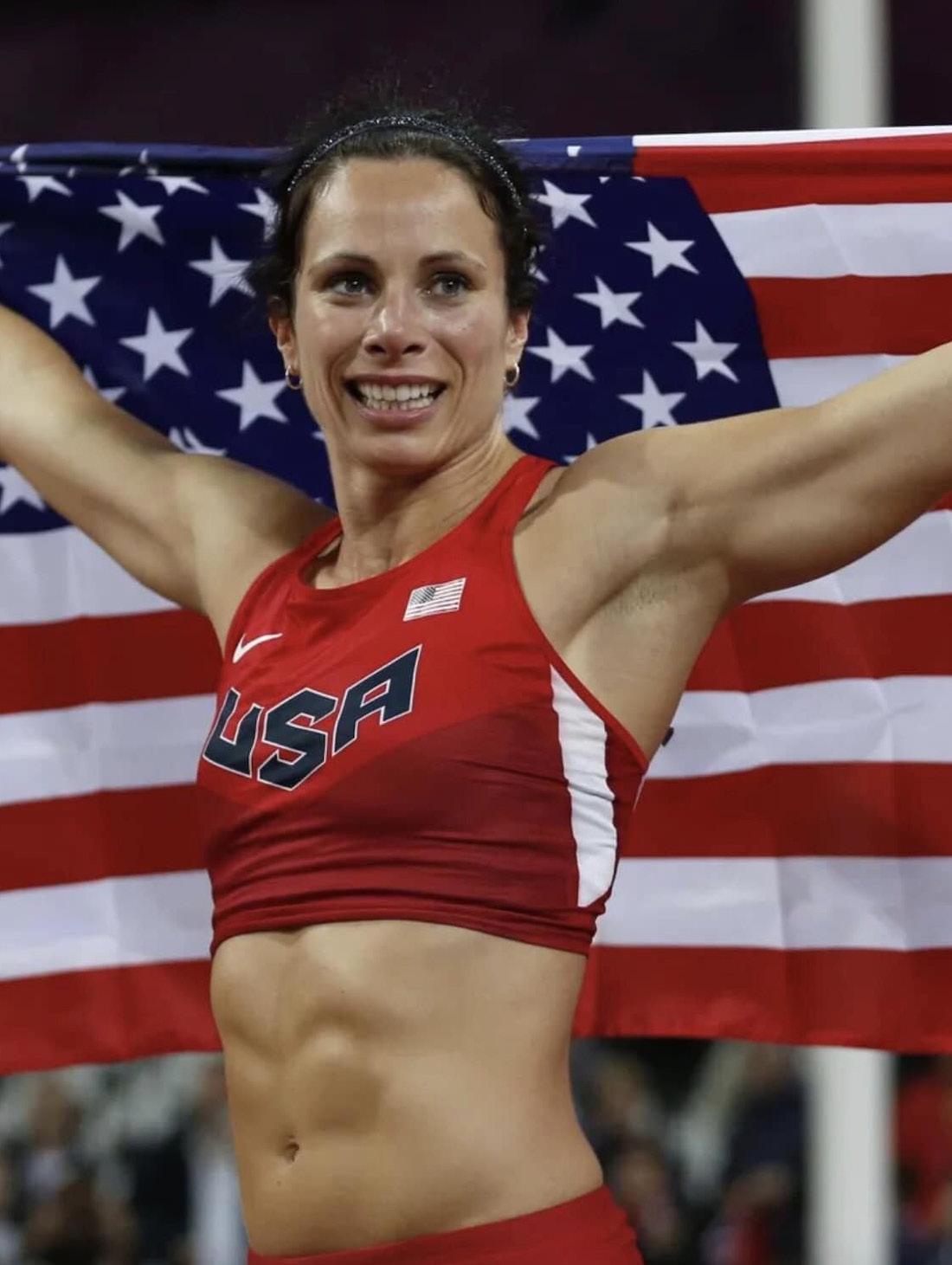
TAKEOFF MAGAZINE
We teach them how contracts work and how to work with an agent; how meet promoters choose athletes to compete; and, if an athlete returns for another combine, their coaching is going to go deeper than their prior visit. It’s truly about the takeaway.
TAKEOFF: You made a conscious decision to make The Combine affordable and to keep yourselves approachable. Can you talk about that?
Rick: It was simple. Jenn and I were talented young athletes, but we did not have money to attend camps. When I grew up, camps were something that wealthy kids did. My brother and I were really good wrestlers, but we had to do it on our own, and the same thing with Jenn. Her family did not have the means for her to attend track or basketball camps.
I’ve been offered crazy amounts of money to train young athletes. Pole vault is very technical and vaulters really need the guidance. We could charge any amount. This is about giving every athlete the ability to attend if they’re at that level. It is important to us that everyone can afford it.
TAKEOFF: And the goal is to do one a month?
Rick: We’d like to do one a month, especially when the weather is good.
In the winter, flying kids in and out of Buffalo and Rochester is a challenge. We may a do a few combines down south during those winter months. It depends on what’s going on in our personal lives. We are trying to get in a little retirement time.
TAKEOFF: Perfect segue into the
next question, was it hard to decide to retire?
Jenn: I think I got to the point where I enjoyed the training and the challenge of it, but when you get to a certain age you don’t enjoy riding on a bus, flying across the world, being told what time you can train, what time you have to eat. You get to a point where that is hard to do and it took the enjoyment out of competing. I just want to live my own life and I don’t want to be told how to live it. It was 24/7 for us. We didn’t have an off switch. We looked at our life like, wow, it could be half over right now and we really need to get on with the rest of it.
I knew I was done when I couldn’t get the adrenaline up anymore. One day I just didn’t care what pole I got on or what bar I made. Plus, I wanted to end on my terms and I did. I didn’t have an injury ending me. I didn’t have Adidas dropping me, I ended on my own and I don’t have any regrets.
TAKEOFF: What will your work be as ambassadors for pole vault going forward?
Jenn: We definitely have different roles in going forward. He’s the coach, the one that can see what’s happening, and what to work on with vaulters. I enjoy learning who these athletes are as people and being able to root for them. I’m excited to see their results. I can follow along and enjoy their accomplishments without the stress of competing myself. I’m looking forward to just being a fan of people.
Rick: For me, the ambassadorship is the open line. So many times, as a coach, I would plateau and there was nowhere to go.
Whether it’s physical, mental, or technical, if you don’t know where to go, call me. Every vaulter plateaus. I’m going to give you the best advice or Jenn’s going to, no matter the topic, the advice that we could never access.
It is amazing how kids will not pick up that phone and call. And I get that it’s hard to pick the phone up and call an Olympic champ or a world record holder. But that opportunity is there. We will give you our time. It’s the open line for us. I think that’s the most important thing.
(Editor’s Note: We have called Rick since our daughter attended The Combine. He got right back to us, while we were still at practice.)
TAKEOFF: What are some things you have fought for over the years that this next generation of vaulters will benefit from?
Rick: We’ve had to advocate for a lot of different changes in the Olympic Trials, and the U.S. Championships. One thing is starting heights and wait time.
We waited three hours in our first Olympic Trials to jump three hours in the Olympic final. It was so bad that Jenn won the Olympic Trials and actually could not complete the victory lap with the flag because she was dehydrated and exhausted. There had to be change.
Jenn: Back when I started, you had to make teams, and there was a standard, but they took everyone who had the standard. So, if they put the standard low enough, you could get up to 28 people in a meet, but they really want the top three. We kept telling them to push high increments at the beginning and then go to the top three. And that’s one thing that
TAKEOFF MAGAZINE
18

TAKEOFF MAGAZINE
Photo provided by Jordan Gray
they have changed. If you go back in the day and look at the height progressions compared to now it is completely different. They worked with us with shelter too. I complained about not having shelter and they said we can’t have shelter because it looks bad on TV. And I’m like, no, no, this isn’t about TV, this is about us. You have to provide shelter out there for the athletes.
TAKEOFF: Can you tell us a crazy story from your competition days?
Rick: First of all, there’s probably fifty of them. In 2015, we were taping up poles in the garage preparing for the World Championships in Beijing. Our big dog at the time got into an allout fight with a skunk. I intervened and got into a wrestling match with them, and Jenn came out to help. In the end, I killed the skunk. Then I realized the skunk had acted weirdly.
We were three days out from getting on an airplane to China. At the last minute I called the veterinarian clinic to check if the skunk had rabies. They told me I had to cut the head off the skunk, put it in a cooler, and bring it to them. Long story short, I put the whole skunk in the cooler and paid the vet $100 to cut the head off. He laughed at me and said these things never come back positive. In the meantime, I had scratches on my legs from the fight. Well, don’t I get a call at six in the morning confirming the skunk tested positive for rabies. Jenn and I needed globulin, the same day we were leaving for Beijing.
I had to get clearance from everybody to take these rabies vaccines all the way over to Japan to the trial camp, and then to China. We had to be on a plane for 13 straight hours and had to keep the booster at an exact temperature the entire time.
Jenn: I wouldn’t take it because I didn’t know how it was going to affect my performance. And they’re like, no, you have no choice anymore so I ended up taking it. In the qualifying round, I cramped in my groin and I was like, well, that was weird. Then, warming up for the finals, I tore it. I competed with a torn groin and I’m telling you it did something with my body.
Rick: It dehydrated both of us quite a bit. Jenn ended up making 4.70m and tying for fourth, which is a phenomenal performance. She couldn’t even get down the runway. But when I tell you we probably have fifty more stories like that, it is just crazy things.
TAKEOFF: Jenn, you’ve pushed out the edge of what is possible for women’s pole vault. What do you think your legacy is?
Jenn: The legacy. When I look back, what I am proud of is that there are a lot of ways to shortcut it and I didn’t shortcut. When I ended my career, I ended with the same agent, the same shoe company and the same coach. It took patience and loyalty. For me it was important that I stuck through things when it was bad and didn’t change my coach, sponsor, or agent. I just kept fighting. I think the legacy is the resiliency.
Mondo (Duplantis) is a great jumper and he’s making it look easy. He’s winning every fight. He’s very blessed with what he does because it’s not easy.
For someone like me, with so many ups and downs, there were many times I wasn’t going to get re-signed because they thought I was done. Then, I made a comeback even better. There were times when people on the Internet said I needed to retire because of my age. Next thing you
know, I have the world indoors and world record.
When people count you out, that’s when you have to focus in. Look at who’s in your circle, and build off of that because the outside people can bring you down fast. My career was such a personal thing and we kept it close. Many people give up or make huge changes. I just kept fighting.
Rick: Jenn had nine lives as a pro. There were probably four distinct times where she was done. You’re allowed to have one bad season at the pro level; if you have two, you’re not around anymore. Jenn is one of the only pro track athletes I’ve seen have two bad seasons and come back and make it to the very top level. It’s unheard of. They give up on you.
Jenn: It’s the injuries. Once they see Achilles, they’re done with you; once they see lower back, they’re done with you. You go through technical stuff where all of a sudden it looks like you’ve never vaulted in your life. You have to come back from that mentally and physically. There’s always something that you’re battling. I’m proud that I just kept fighting.
TAKEOFF: Rick, you mentioned that you’ve coached many more athletes to 10’6” than to 16 feet. Do you coach anyone regularly now?
Rick: I do work with some people now, but not a lot. Since 2006, I have primarily only coached Jenn. I have worked with some really talented kids who have done well, but I’m not their primary coach, I’m a secondary coach.
It is a lot easier coaching high school level pole vaulters. Coaching at the pro level was never enjoyable to me. It was a job under the spotlight where
TAKEOFF MAGAZINE
20

there was a tremendous amount of criticism and everything we did was magnified. I’m a secondary coach now and anybody can come work with us. My job now is to help the athletes, and I love being a part of cooperative coaching with the primary coach.

TAKEOFF: What advice would you give a coach whose athlete has plateaued?
Jenn: Usually I see that when someone plateaus, it’s because they’re fixated on one point of the vault and stuck there. We had a girl up here and she and her coach were just stuck on her run and no other part of her vault. Once we actually looked at it and got her to focus on other phases, and encouraged her to just do it, progress was made. Sometimes coaches get fixated on one specific thing that they want their athlete to do better and they want it to look like another person’s vault. Well, maybe that’s not their strength, you know? Maybe that’s just how they’re going to do it. Work on everything else too, and try to enhance it in the background. Many times, there’s too much focus on one thing.
Rick: There is no best coach in the world; there are just coaches who mesh with you the best and are
open enough to get you to where you want to go.
If your athlete’s plateauing, have another coach take a look at your vaulter or have your athlete talk to another athlete who does well. A coach’s insecurities will affect the athlete. A coach has to be open to ideas. When I couldn’t figure something out, I sent Jenn to another world class vaulter and some European coaches for feedback.
There are a lot of different ways to do this. All our technical models now kind of merge three or four models together. There is no one way. Some coaches will obsess that every little phase has to be perfect. That’s not true. Jenn has had great jumps where she was off on some things by quite a bit, but the other seven or eight things were on and that matters.
Also, I never, ever say that an athlete is a head case. If I see an athlete struggling technically, that is nothing but a challenge for me to break through and figure out how to make it work. You’ve got to be positive. I’m a hard coach, no question. But if the coach builds confidence through what they know, their ability to develop drills, to teach, the issue is to get the athlete to execute. If you do that in a step-by-step process, once that
confidence rises, it takes off and progress is made quickly.
TAKEOFF: Jenn, how did you handle the mental perspective throughout your career?
Jenn: Prior to 2017, I never understood how someone could be afraid of a pole, or run through a pad. I was like, just run and hold on to the pole. Then in 2017, I started to overthink things and that anxiety manifested and I was like, oh, that’s how they run through the pad. I had to work through it, which I’d never had to before.
At first, I thought I’m just going to tough this out and it didn’t work like that. It became something I had to train, just like I trained technical and trained my diet. I had to work on the mental by breaking down things step-by-step, building confidence on short runs and smaller poles, and backing up according to when I was ready. Because when you push it, it doesn’t come.
I never would have been able to answer that question if I hadn’t gone through it. And then once I went through it, I knew what I did to come out of it. I think that experience allowed me to be able to help athletes, because that’s a big question I get in my Instagram DM’s. And now I know how to assist an athlete get through it.

COACH’S CRITIQUE
Approach
Approach and Pole Carry
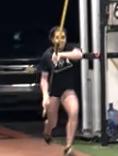

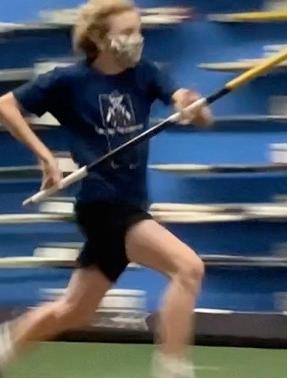
APPROACH APPROACH
Approach Approach
Colin has a very nice pole carry, I like the way he keeps his hands high and is very balanced. He also has timed his pole drop very nicely. When the pole starts moving, it doesn’t stop until he’s in the pit, and when he initiates his plant the pole tip is right at eye level. With that being said, the area that Colin can work on is in his run.
Colin has a very nice pole carry. I like the way he keeps his hands high and very balanced. He also has timed his pole drop very nicely. When the pole starts moving, it doesn’t stop until he’s in the pit, and when he initiates his plant the pole tip is right at eye level. With that being said, the area that Colin can work on is his run.
I really love how Mason pushes aggressively out of the back of his run and appears to create some power and momentum during the first two thirds of his run. He is bringing a lot of energy. He is running with a good natural rhythm and tempo.
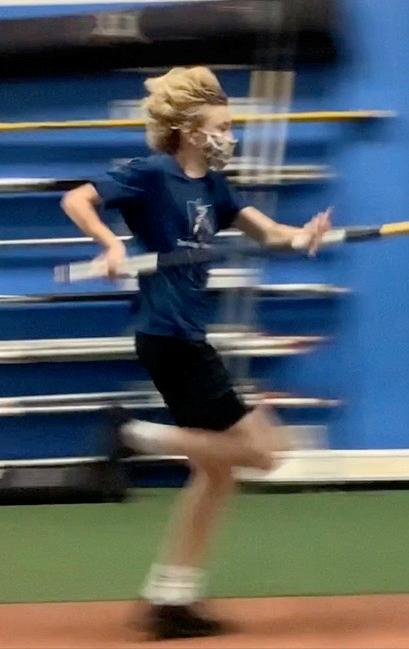

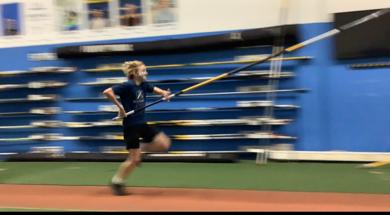
Ali does a really nice job of running and carrying the pole, especially for someone who has been vaulting less than a year. I like how she has good upright running posture and puts her feet down with an aggressive cadence. She is running from 14 steps which is relatively a short approach so the run must build gradually but quickly from that distance. She is balanced and dropping the pole tip smoothly keeping her arms close to her body which is good.
The rhythm starts off much too fast and actually slows a little at the end. Regardless of the length of run, you want to see a slow relaxed rhythm in the beginning and a very fast rhythm at the end. It’s very hard to start out really quick, and get even quicker.
The rhythm starts off much too fast and actually slows a little at the end. Regardless of the length of the run, you want to see a slow relaxed rhythm in the beginning and a very fast rhythm at the end. It’s very hard to start out really quick, and get even quicker. Also, he needs to work on getting his knees up and running taller from the hips down. Along with all of the normal sprinting drills that everyone does, I think he would really benefit from running over mini hurdles or cones. should be about 6 to 9 inches tall for him, and spaced out enough in the beginning to force him to stretch out his strides and close enough together towards the end to help increase the rhythm.
I would love to see less forward and backward pumping of his hands and more support underneath the pole with hands and elbow. He appears to also be sinking in his hips and over-striding a little bit during his last three lefts. If he can work on staying taller and getting his feet down quicker while punching his hands up, I believe he will go even higher!
Ali does a really job of running and carrying the pole, especially for someone who has been vaulting less than a year. I like how she has good upright running posture and puts her feet down with an aggressive cadence. She is running from 14 steps which is relatively a short approach so the run must build gradually but quickly from that distance. She is balanced and dropping the pole tip smoothly keeping her arms close to her body which is good. Ali is too far inside on the last step of her approach, either from striding out at the end of her run or her approach being too close overall. Being ‘inside’ her optimal takeoff point, which is under her top hand, will significantly decrease her momentum through takeoff.
Also, he needs to work on getting his knees up and running taller from the hips down. Along with all of the normal sprinting drills that everyone does, I think he would really benefit from running over mini hurdles or cones. They should be about 6 to 9 inches tall for him, and spaced out enough in the beginning to force him to stretch out his strides and close enough together towards the end to help increase the rhythm.
Ali is too far inside on the last step of her approach, either from striding out at the end of her run or her approach being too close overall. Being ‘inside’ her optimal takeoff point, which is under her top hand, will significantly decrease her momentum through takeoff.
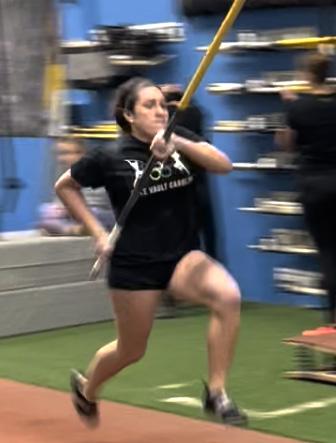

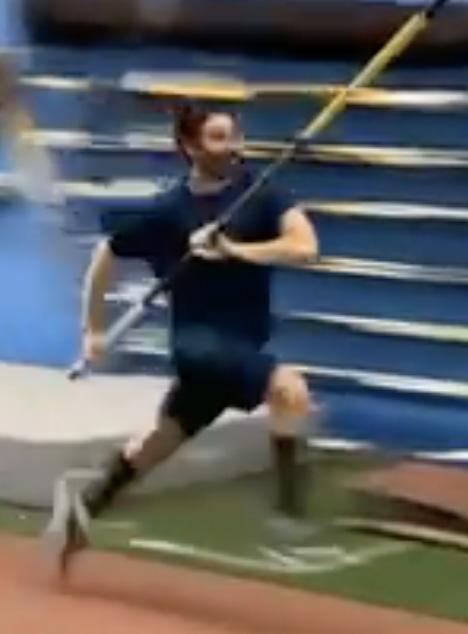
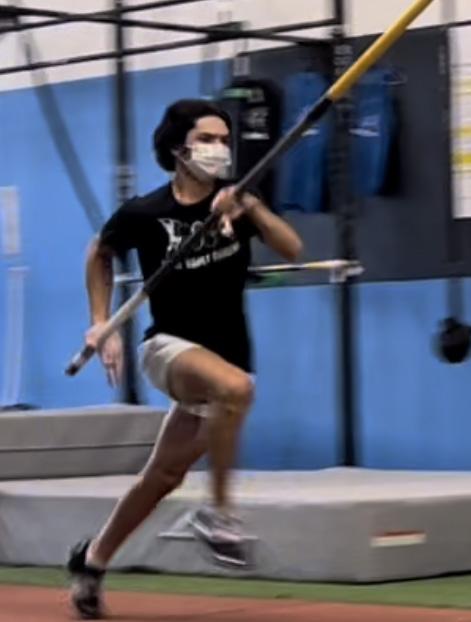
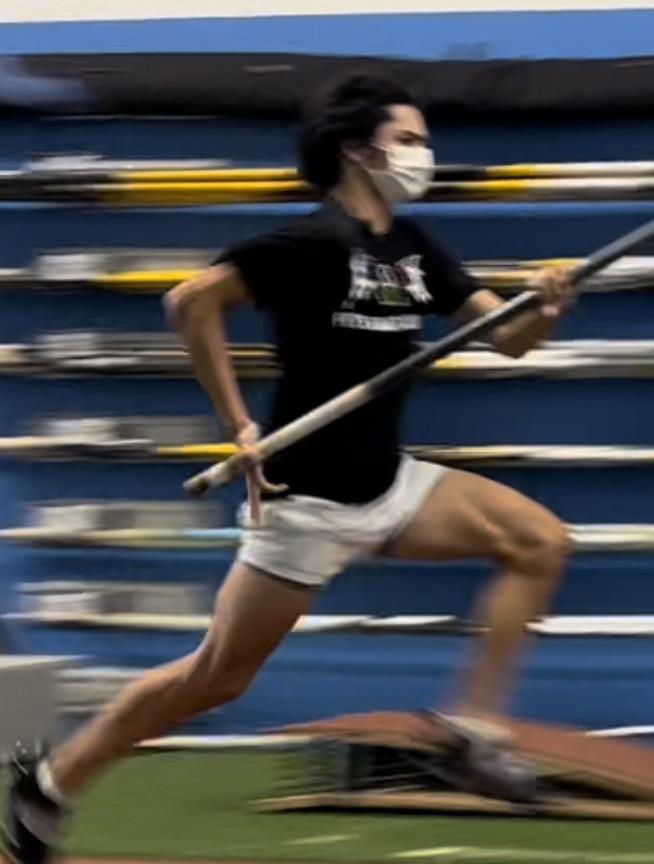
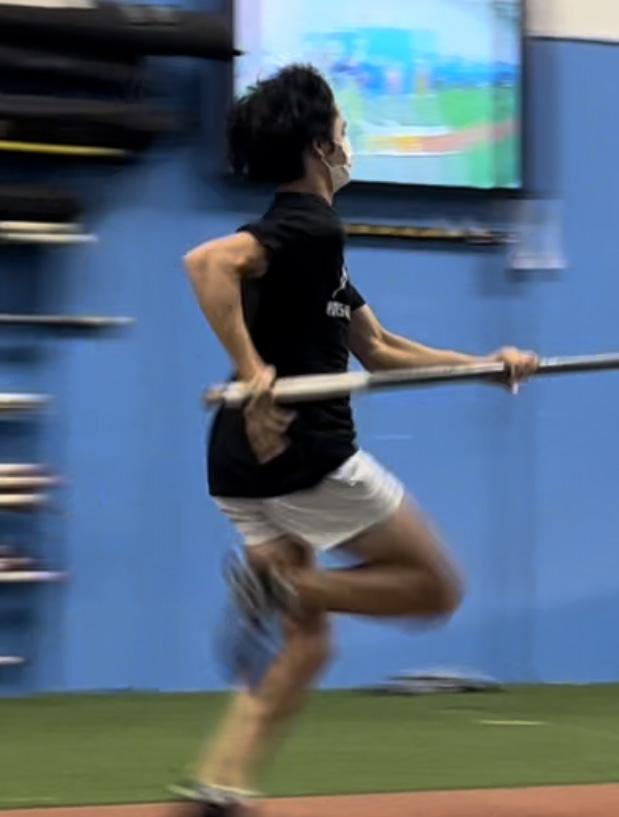
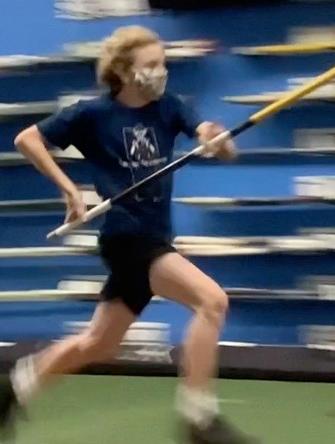
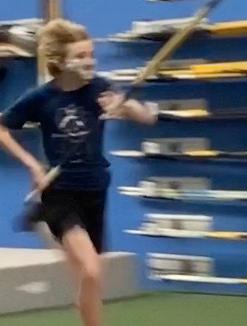

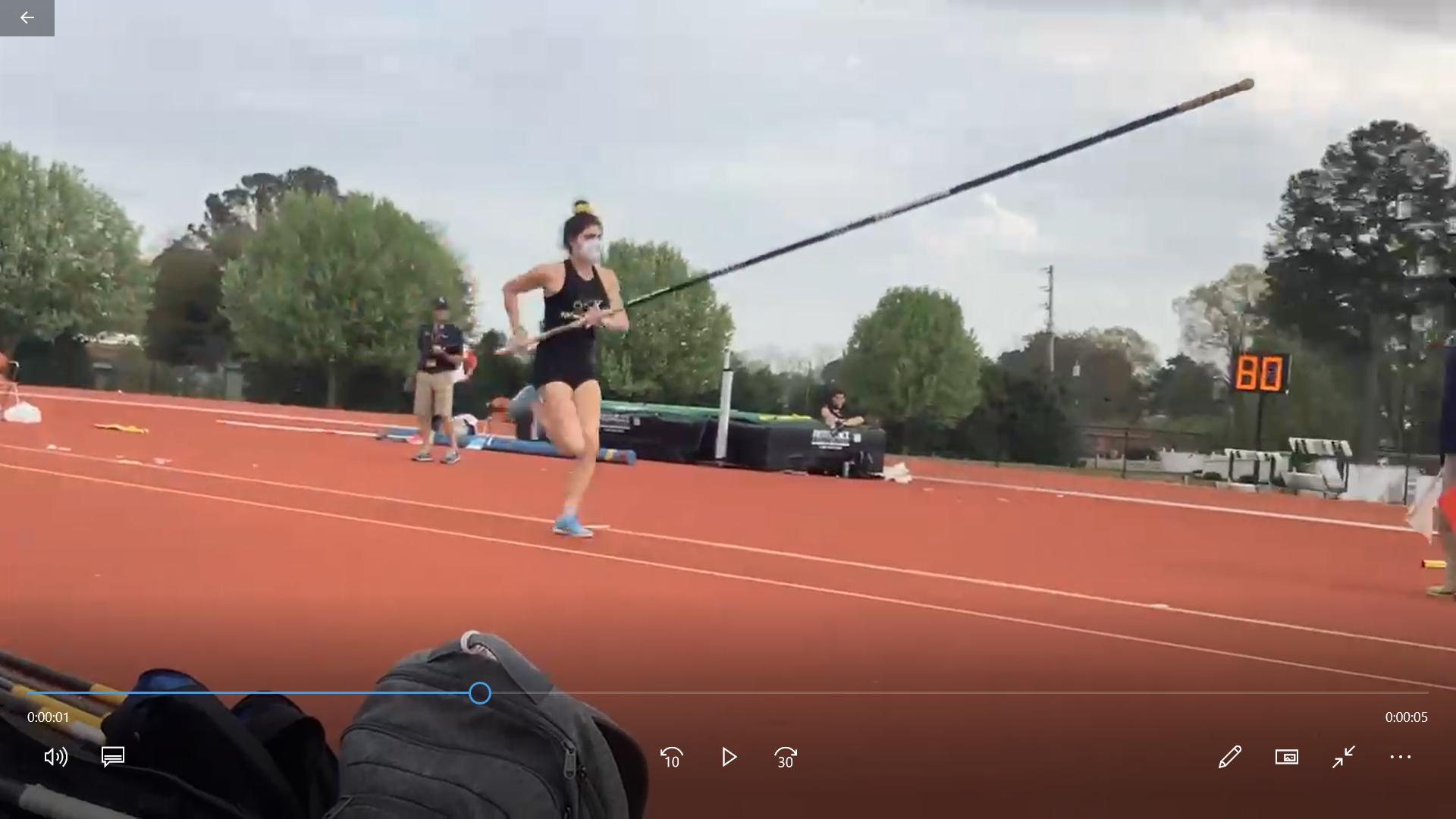
Colin has a very nice pole carry. I like the way he keeps his hands high and is very balanced. He also has timed his pole drop very nicely. When the pole starts moving, it doesn’t stop until he’s in the pit, and when he initiates his plant, the pole tip is right at eye level. With that being said, the area that Colin can work on is his run. The rhythm starts off much too fast and actually slows a little at the end. Regardless of the length of run, you want to see a slow, reladxed rhythm in the beginnning and a very fast rhythm at the end. It’s very hard to start out really quick, and get even quicker. Also, he needs to work on getting his knees up and running taller from the hips down. Along with all of the normal sprinting drills that everyone does, I think he would really benefit from running over mini hurdles or cones. They should be about 6 or 9 inches tall for him, and spaced out enough in the beginning to force him to stretch out his strides, and close enough together towards the end to help increase the rhythm.

TAKEOFF MAGAZINE 28 TAKEOFF MAGAZINE 30
Jim Bemiller breaks down technique in this analysis of a vault by Pole Vault Carolina athlete Ali Laros
1
Run Run Run
RUN RUN RUN 2 1 3 APPROACH
I think Ali has a very impressive plant and takeoff mechanics for a relative beginner. Three steps out from takeoff she is starting to raise the top hand while the tip of the pole drops through the level of her eyes/chin. She flips the pole efficiently in her hands and gets her hands under the pole so she can execute a quick and smooth upward plant. She also executes the dropping of the pole tip and transfer into a good takeoff position with a good upright posture.
Unfortunately, her takeoff step is too far inside the optimal of under her top hand. This inside takeoff does not allow her to fully extend through the takeoff or finish her jump.
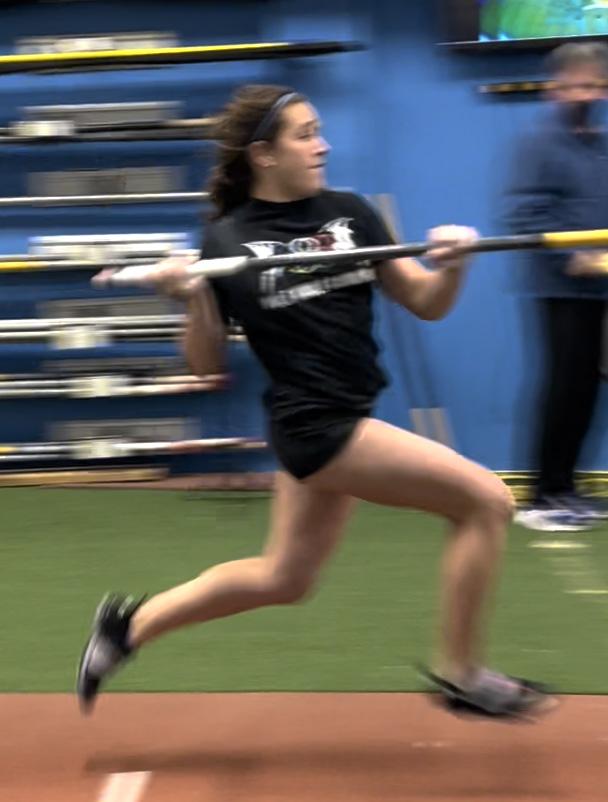

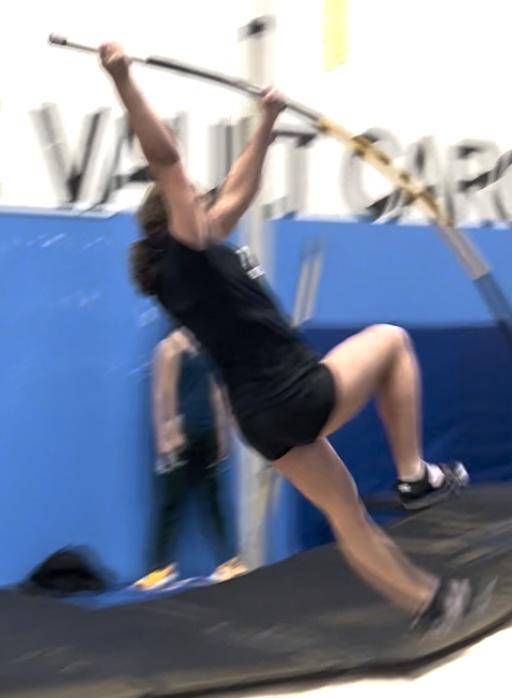

TAKEOFF MAGAZINE
TAKEOFF
TAKEOFF TAKEOFF
25
COACH’S CRITIQUE
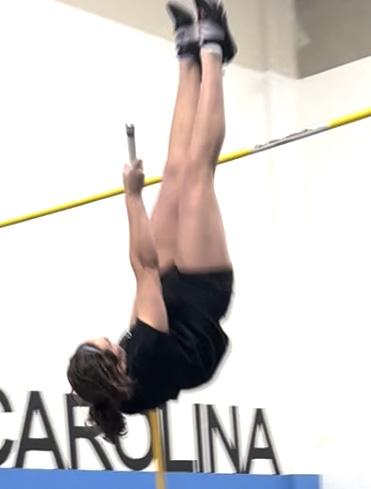
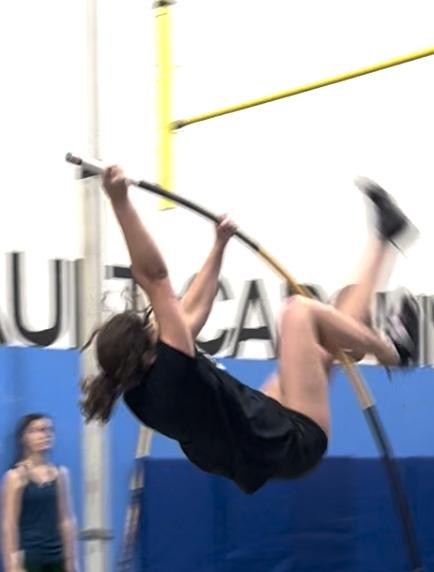
SWING
SWING
SWING

9 7 8 26
The consequences of an ‘inside’ step at takeoff is a loss of momentum through takeoff, the hips being too far forward, and the instinct to block with the bottom arm, which has negative effects on pole rotation and swing speed. The inside step has a chain reaction which makes the swing and turn more difficult. Ali does a very good job of driving her right/lead knee and swinging her trail leg to help build momentum and swing her center of gravity up.
She makes a common mistake as she finishes the swing by making a move toward the crossbar. The swing and turn should be focused through the top of the pole or the vaulters top hand, rather than any move toward the bar. TAKEOFF MAGAZINE
Commentary
The vault is all about building momentum and Ali is doing a lot of things to help her pole speed and swing speed. She has good running mechanics and carries the pole well. Ali does a really good job with her plant mechanics to transfer the pole to a good takeoff position with arms extended strongly over her head at the end of the approach.
The vault is also sequential and each phase effects the following phases. Because Ali’s takeoff is too far under/inside her top hand at takeoff, this decelerates her momentum, which negatively affects the rest of her vault. Taking off in the correct spot, underneath the top hand, must be evaluated by her coach. Is she striding out to reach her takeoff? Can it be cured by moving her step back, or is it a stride pattern issue and she needs to work on a quicker stride pattern to correct the under takeoff? The snapshot of this video clip on this particular jump looks like she may be too far away and is reaching on her last steps to compensate.
As a beginner, I would focus on the rhythm of the approach run and effective pole drop and takeoff mechanics. Proper run and plant technique which leads to an effective takeoff will solve most of the swing and turn issues and make the later phases of the vault easier to execute.
In general, for beginners at this stage of development, I would work on all types of wickets or low hurdle running to improve running posture and cadence. Also, emphasize pole plant drills and hand/foot coordination drills. In planting the pole, the hands dictate the rhythm of the feet so emphasize quick hands to put the feet down quickly and finish with a strong plant towards the crossbar. Specifically for Ali, I would suggest she and her coach work on a quick rhythm through the last two steps of the approach and start her plant motion just a bit earlier. Work to get that takeoff under the top hand and the momentum of her jump will improve and have a great payoff in pole speed and swing speed.
Ali, you should be congratulated on how far you have come in a short time. You have a really nice plant set up far beyond your years. Work on getting your feet down and your takeoff in a good spot and that awesome plant will be an even better takeoff!!
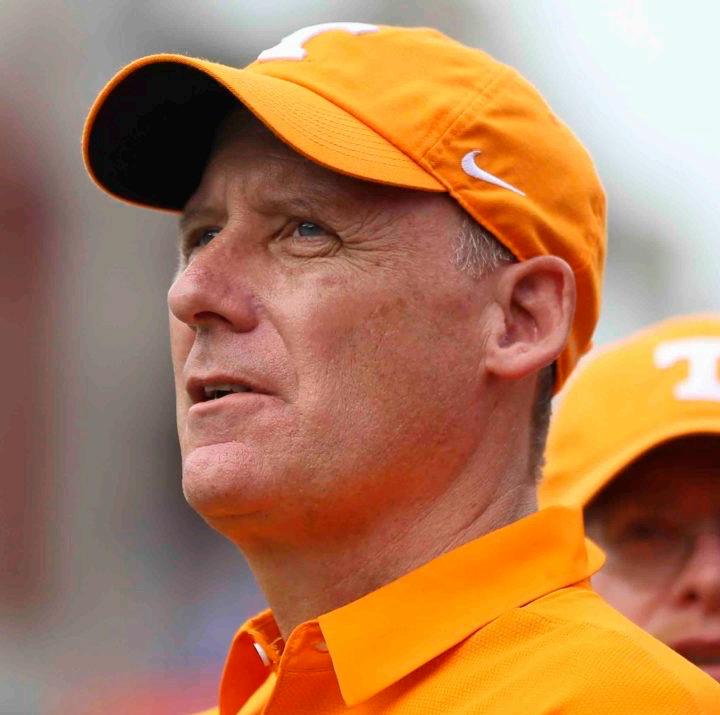
27 TAKEOFF MAGAZINE
EJ Obiena Perseveres
Sydney Horn Higher at High Point
By Ralph Hardy
Google Ernest John Obiena and then click “images.” The Filipino Diamond League winner with a 5.94 (19’5”) PR has transformed his body from that of a lean and sinewy hurdler to a muscular pole vaulter, with broad shoulders and rippling arms. And then you notice the smile – one of pure joy.
Now ranked #3 in the world and the Asian record holder, Obiena had a 2022 season for the ages. But to think his success came overnight is a mistake. Years of slow progression and training thousands of miles from home, the purgatory of going unsponsored, and a devastating injury nearly derailed him.
EJ vaulted from an early age, but hurdles were his first love. When EJ didn’t qualify for the Philippine regional hurdling championships, he decided to devote himself to the pole vault, where he won a scholarship to the University of Santo Tomas. The speed and precision required for hurdling translated well to the pole vault runway.
In early 2014, EJ stood in line to meet Sergey Bubka, hoping for an autograph. EJ got the autograph, but even better, he was invited to train with Bubka’s coach, Sergey Petrov, in Formia, Italy, for three months. Later that year, EJ broke
the Philippine national record, with a vault of 5.01m (16’4”) and set the junior national record as well, as he was still only 18 years old. His annus mirabilis continued as he broke his own record several times, ultimately vaulting 5.21, just over 17 feet.
The vaulting community noticed.
The following year, EJ raised his PR to 5.25m, placing second in the Southeast Asian Games. He won gold at the 2016 Philippine National Games with a vault of 5.47 m, overcoming the greatest fear of any vaulter, a broken pole. The future looked golden.
But pole vaulting can be cruel and no one escapes unscathed. The day before he was to leave for the 2017 Southeast Asian games, he tore his ACL on a botched landing. An injury like that requires surgery, and six months of recovery. And EJ was still unsponsored.
EJ considered retirement, perhaps getting a real job. He returned to school to work towards his degree, walking to class in his cast. He assiduously followed his knee rehab program. After months of grueling rehabilitation, EJ began performing the pre-vault drills we all know and love to hate: three-step stiff poles, fly-aways, and stay behinds. His knee held up and soon he was
flying again.
In 2019, with a gold at the 2019 Summer Universiade, EJ established another Philippine national record of 5.76m, and then achieved every pole vaulters’ dream: qualifying for the 2020 Olympics by soaring over the qualifying height of 5.81m at a pole vault meet in Italy. And, say it with me: set another national record. At the 2019 World Athletic Championships, he placed 15th out of 35 competitors, but failed to make the finals. Still, 2020 and the Tokyo Olympics loomed.
Global travel restrictions kept EJ in Italy for months. There he continued to train under the guidance of Petrov, as well as the American conditioning coach and business CEO Jim Lafferty, preparing for Tokyo.
Having already qualified for the Olympics, EJ prepared for the biggest event of his career. The media demands intensified. Track and field is barely on the radar of Filipino sports consciousness, but the charismatic and photogenic Obiena was on every sports page in this sports-mad nation. Finally, he arrived in Tokyo. Competing in Asia before thousands of fans in the stadium and maybe all 111 million Filipino compatriots watching, EJ made the finals and finished tied
:
Photo credit: Pole Vault Carolina
28 TAKEOFF MAGAZINE

TAKEOFF MAGAZINE
for 11th, vaulting 5.70m. Not bad.
As many unsatisfied Olympic athletes do, he kept competing, and at the Golden Roof Challenge, in Innsbruck, Austria, he finished in first place with a vault of 5.93m (19’5”), setting again the Asian record. Next, he traveled to Hayward Field in Eugene, Oregon and won bronze with a vault of 5.94m, becoming the first Filipino to win a medal of any kind at the World Championships, ever.
Then there was Brussels. At the Brussels Diamond League event on September 2, 2022, EJ took on the best vaulters in the world once again. We’re talking Lavillenie, Nilsen, Braz, Broeders, Guttormsen and Koppelar. Oh, and some guy called Mondo. EJ won by ten centimeters over Mondo and by another 10 centimeters over Chris Nilsen, the Olympic silver medalist.
That just isn’t done. But don’t tell EJ. He’s soaring still--on the cover of Esquire Philippines and nearly every media outlet in the country. Still, the humble pole vaulter took the time to answer some questions from TAKEOFF.
TAKEOFF: You are considered a “national treasure” in the Philippines. What does that mean to you?
EJ: I haven’t fully comprehended what it entails. I just try to do my best in what I do and feel very blessed to be appreciated by my home country.
TAKEOFF: When 2022 started did you have any idea you would have such a magical season?
EJ: I don’t think there was ever a point in the season where it looked like it was going to be great. Battling issues and contracting covid
mid-season were not the signs I was hoping for.
TAKEOFF: 6 meters seems to be on the horizon. What will it take to achieve that height?
EJ: Be more consistent and continue to improve my vaulting one day at a time to better my chances at achieving 6m.
TAKEOFF: You’ve lived in Formia, Italy for the last three years to be near your coach. What has that been like being so far away from your family?
EJ: It is a journey. I would love to have my family close to me, but the reality is that my coach and the circuit is based in Europe. I need to pay the price to achieve my dream.
TAKEOFF: What’s the most difficult part about being on the pro track and field circuit?
EJ: Starting is the most difficult. Getting into the big meets and consistently performing at a high level is mentally and physically exhausting.
TAKEOFF: What does a typical training week look like?
EJ: My daily schedule is quite repetitive. I wake up, prepare my breakfast, eat, rest for 30 minutes, go to the track, prepare for training, warm up, train. Then, I eat lunch at the training center, rest for an hour or two before the next training session, which starts at 3PM or 4PM and finish around 8PM. I eat dinner at the training center, go back home, take a shower, sleep. I do that 6 days a week, sometimes 7.
TAKEOFF: How do you prepare yourself physically and mentally for a challenging line-up of meets?
EJ: I trust my coach and his program.
It takes a lot from me physically but with the right preparation and mindset, performing well is possible.
TAKEOFF: Who were your track and field idols growing up?
EJ: Sergey Bubka has always been a guy I looked up to growing up. He was the god of pole vault.
As I grew older, I started to watch lots of Tim Mack’s jumps and became a fan of him as well.
TAKEOFF: You were unsponsored in 2021 and faced knee surgery without the funds to pay for it. I understand that your coach Vitaly Petrov and your alma mater Chiang Kai Shek College helped pay for it. What emotions were running through your mind during that period?
EJ: Emotionally I was destroyed and physically I was struggling. I was sad and worried about my future. Having all of it happening at the same time was overwhelmingly negative. I needed pillars to lean on and to have a shred of hope that the future was worth fighting for.
TAKEOFF: Do you think your success will inspire younger Filipino athletes to pursue track and field?
EJ: I hope so. Track and Field is not that big in Philippines but it is slowly gaining traction. I hope I can inspire more kids to try pole vault and experience what I have experienced through the sport.
TAKEOFF: What is your “go-topole?”
EJ: Any pole that makes the bar.
TAKEOFF: What advice would you give to young pole vaulters?
EJ: Have fun and enjoy the journey.
TAKEOFF MAGAZINE
30

18
ADVERTISE HERE
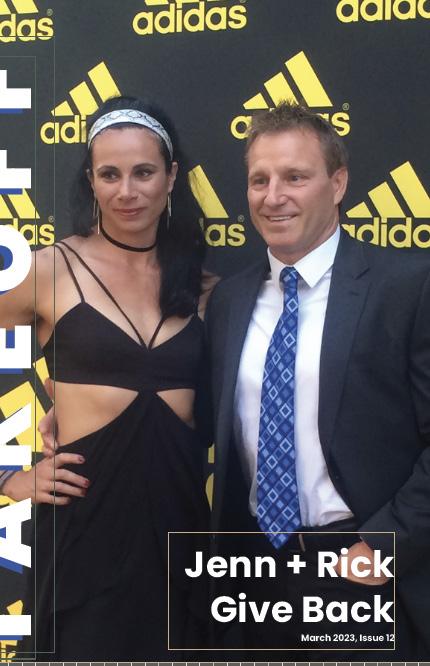
















 Ralph Hardy
Jim Bemiller
Olympic Pole Vault Coach Gold Medal 2004 Silver Medal 2000
Neuroscience student Pole Vaulter, Middlebury College
Leah Granger
Playright Novelist, Argos Masters Pole Vaulter
Ralph Hardy
Jim Bemiller
Olympic Pole Vault Coach Gold Medal 2004 Silver Medal 2000
Neuroscience student Pole Vaulter, Middlebury College
Leah Granger
Playright Novelist, Argos Masters Pole Vaulter


















































